How to Increase Your Lung Capacity for Hiking
Feel like you are always huffing and puffing on the trail? Here are 5 ways to improve your lung capacity for hiking.
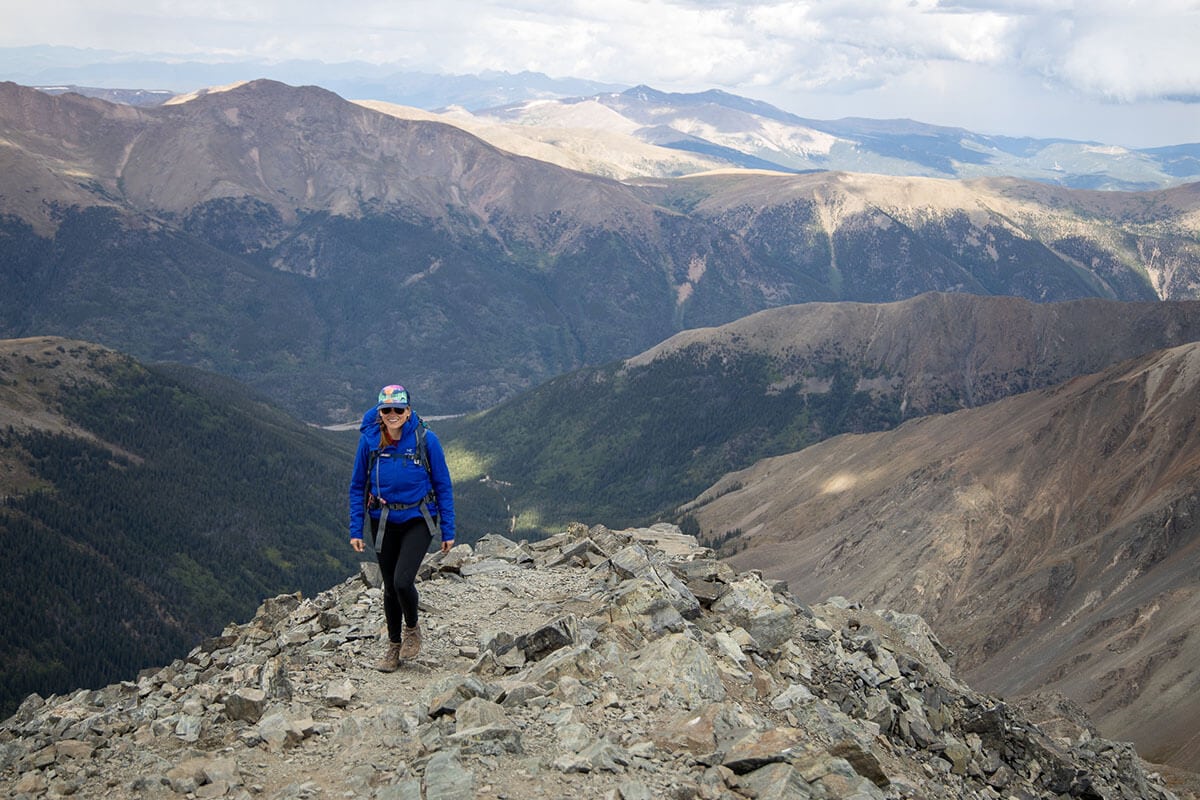
Your hiking lung capacity is a critical factor in your ability to conquer long trails or climb to high elevations. If you are a beginner, there’s no need to feel self-conscious about being out of breath, it’s a totally normal experience for both first-time and expert hikers.
Before I started hiking regularly, I remember being embarrassed when I would be more out of breath than my friends on the trail. Now more than 15 years later, I still find myself breathing heavily sometimes, but I realize how silly it was to let that bother me. It’s just a simple fact of hiking. In fact, if you are breathing hard, it means you are challenging yourself, and that is something you should be proud of. And if you’re wondering how to increase your lung capacity, you’re in the right place.
So, if you ever found yourself gasping for air while on a hike and wondered if there was a better way to breathe, then the answer is yes. Improving your lung capacity for hiking is not only helpful for hiking; it’s good for your everyday activities as well.
This post may contain affiliate links.
Here are tried and true tips to help you increase your lung capacity for hiking so you can breathe more efficiently on the trail.
What is Lung Capacity?
According to the Lung Institute, lung capacity is defined as how much air (or oxygen) your body can use. Though it may seem similar, it is different from lung function, which is a term used to describe how much air your body can take in and how efficiently it works. While both of these actions are important, only lung capacity can be improved, lung function cannot.
Save this post!
Enter your email & I'll send this post to your inbox! You'll also receive my weekly newsletter full of helpful advice for planning your adventures.
How Does Lung Capacity Work?
Simply put, your muscles need oxygen to function properly. As you breathe, your lungs work to intake oxygen and the heart pumps it out through the body to give your muscles the energy they need. This is the main reason why your heart beats faster to increase circulation and why you breathe more heavily during exercise.

Why Should You Improve Your Lung Capacity?
According to the National Institute of Health, “in a resting state, you breathe on average, 15 times per minute“. While exercising, like say, scrambling up a rocky trail or high alpine hiking, your breath increases to 40-60 times per minute to keep the muscles working. Not only that, but chronic over-breathing can also be an issue in everyday life; we sometimes breathe 2-3 times more air than required without knowing it, and this can lead to health problems.
With healthy lungs and good lung capacity, even when you feel “out of breath” you still have a large breathing reserve. So, that means you have more strength, energy, and better functioning muscles that need less oxygen to work efficiently. How cool is that?
5 Ways to Increase Lung Capacity
1. Strengthen Muscles & Increase Stamina
Improving your exercise tolerance will help you increase your lung capacity for hiking, build stronger muscles, and increase your stamina so you can crush that long hike! Try to fit in workouts that combine cardio and strength training about three times per week. This is the recommended amount of time that experts believe will bring a 5 to 15% increase in lung capacity. Plus, with stronger muscles and higher tolerance, your body can intake oxygen more efficiently. Just remember to breathe while you’re exercising. Here are our favorite strength training exercises:
- Squats or jump squats
- Lunges
- Jumping jacks
- Standing calf raises – feet shoulder-width apart, raise your heels up & back down
- Leg lifts – lay on your back, feet straight out. Raise & lower one leg at a time (or both if you are advanced). Keep your arms under your bum for more stability and keep your low back pressed to the ground
- Stair master (or find stairs in your city – school gyms or parks)
- HIIT and bodyweight exercise classes – YouTube is a great place to get started
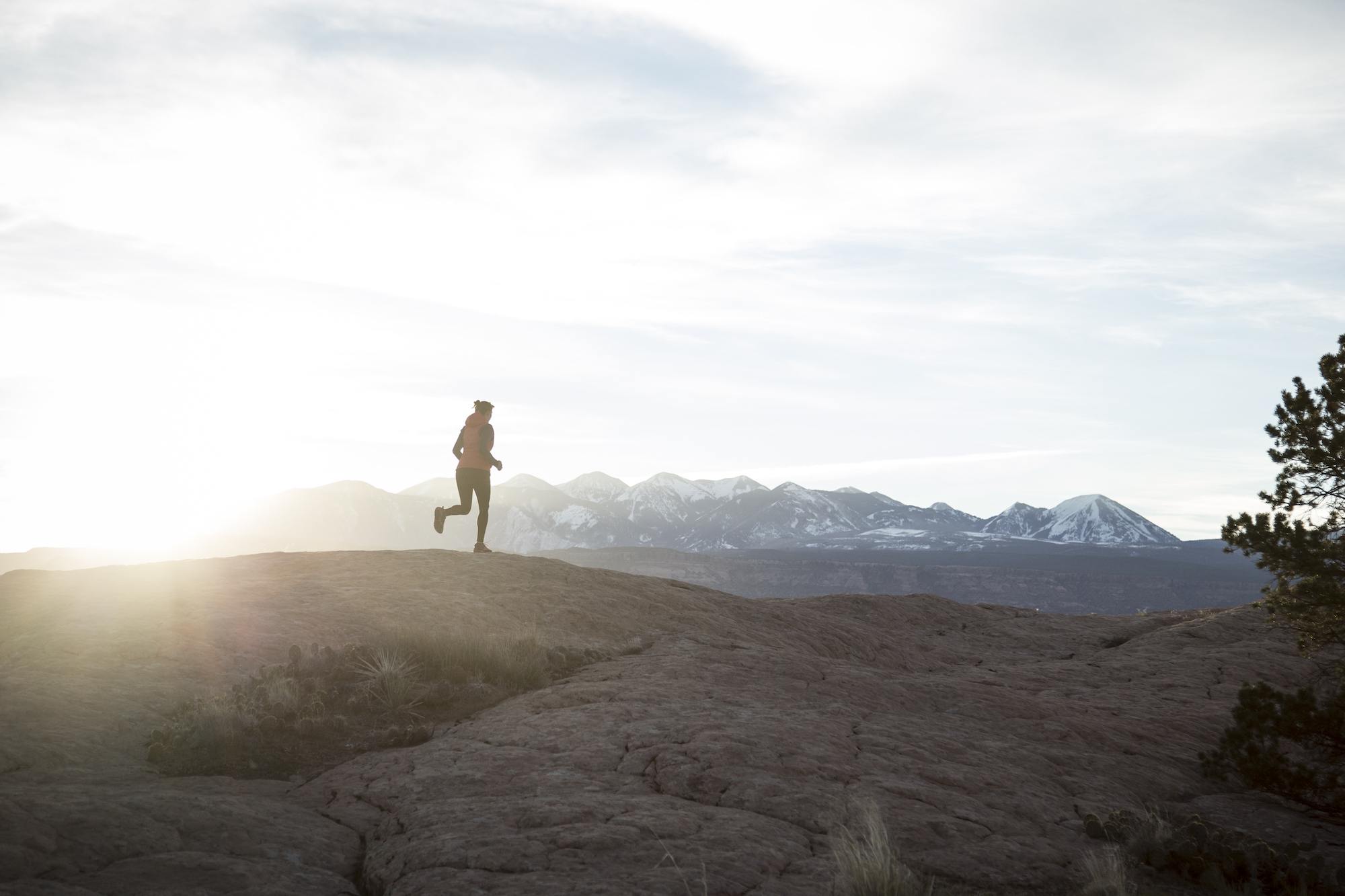
2. Breathwork
Along with your weekly workouts, set aside time to incorporate some simple and impactful breathing exercises as well. Not only can breathwork help to increase your hiking lung capacity, but it stimulates the Parasympathetic Nervous System (PNS) which brings you feelings of peace and calm. And guess what? When the body is relaxed, you breathe easier! Try these breathing exercises to stay calm, focused, and energized out on the trails and in your everyday life.
- Simple Breathwork: Find a comfortable seat, either sitting upright or reclined and close your eyes. Inhale in for a count of four or five. Hold for three seconds (as you repeat this exercise, work up to a five-second hold). Exhale all the air out slowly and with control until empty. Draw your belly in towards your spine to help exhale completely. Repeat this about eight times.
- Box Breathing: In that same comfortable position, close your eyes and inhale fully while counting to 3. Hold your breath at the top for 3 seconds, then slowly exhale for 3 seconds. Finally, hold at the bottom of your exhale for 3 seconds. Repeat about eight times, and work your way up to 4, 5, or 6-second holds.
- Alternate Nostril Breathing: Find your comfortable seat and close your eyes. Cover your left nostril with one finger (ring finger works well) and inhale in for a count of six. Pinch both nostrils and hold for three seconds or longer. Cover your right nostril with your thumb and exhale out of your left nostril for five seconds. Inhale through your left nostril, hold, then exhale through your right nostril. Repeat this five times and practice extending the length of your inhales, exhales, and holds (inhale for six, hold for six, exhale for six, etc.). When you have finished, sit with your eyes closed and take at least three full rounds of breath, breathing as you normally, and notice the difference in your mind, body, and breath. Note: This exercise is especially helpful for stress and anxiety.
- Wim Hof Breathing: In a seated position, inhale deeply through the nose or mouth into the belly, then chest, and then exhale unforced through the mouth. Repeat this 30-40 times in short, powerful bursts. On your last inhalation, inhale as deeply as you can, then let the air out and stop breathing. Hold until you feel the urge to breathe again. On your next inhale, draw one big breath, hold for 15 seconds, and exhale. Repeat this entire sequence 3-4 times. Check out the Official Wim Hof app if you’d like a guide to help you practice this regularly.
To learn more about the science of breathing and different breathwork techniques, check out the book, The Oxygen Advantage.
3. Stretching
Make room for your breath by doing simple stretches that release tightness in your shoulders, chest and side body. It’s always a good idea to start a yoga practice and incorporate movement with breathwork, but if yoga is not for you, doing a few simple stretches will help to expand the muscles of your rib cage and diaphragm can help cultivate a greater lung capacity for hiking.
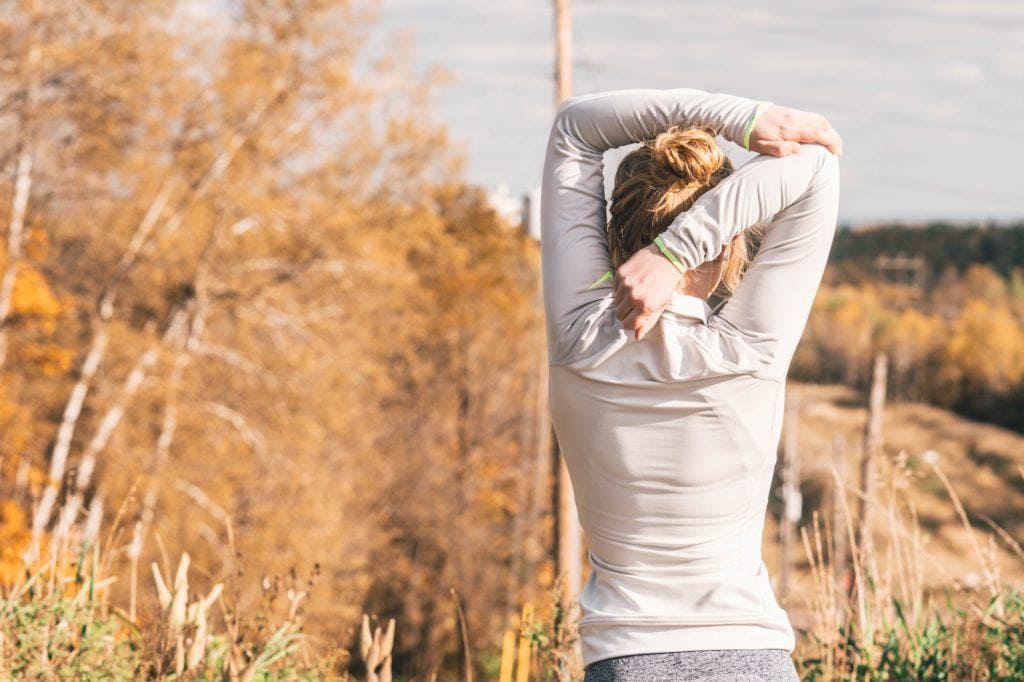
4. Practice Good Posture
Many of us spend hours of the day sitting at a computer which generally causes us to hunch forward, along with driving, sitting on the couch, and the myriad other things we do that add up to affect our posture. Whether you’re standing, sitting, walking, or hiking, remind yourself to keep your back straight, your core engaged, and your shoulders back. Along with the stretches above, this helps open the chest and give the lungs more space to breath.
5. Hike More
Consistency is key to building up more endurance and greater lung capacity on a hike. It might sound cliché but the more you get out there and hike, the better your hiking lung capacity will become. Work in hikes with some elevation gain to really get your heart and lungs working. Take the breathwork and postural practices you’ve been doing at home and apply them to real-life situations when you’re out on the trail.
How to Breathe at High Altitudes
On high alpine hikes, you will encounter thinner air pressure which makes it more difficult for your lungs to take in oxygen since the air pressure inside your body is higher than it is outside. I couldn’t believe the effects when I was on my Everest Basecamp Trek last year way up at 18,000 feet. Even when hiking above 8,000 feet I notice myself getting out of breath more quickly than normal.
To combat the challenges of high altitude, breathe slowly and deeply to decrease your heart rate and help your body to take in the oxygen it needs. Try to pace your stride with the slow rhythm of your breath and if you really feel like you’re struggling for air, slow down the pace.
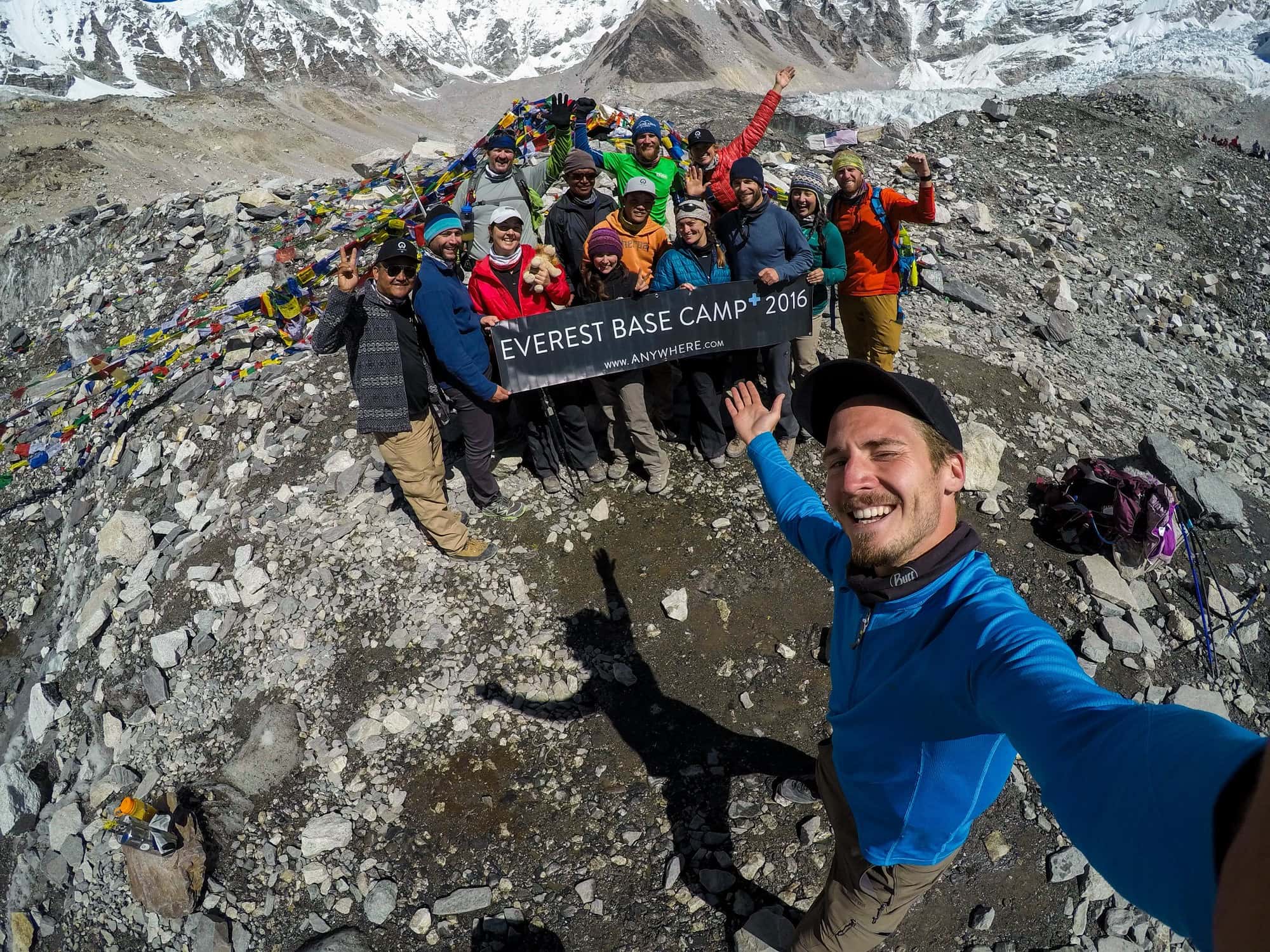
Have you improved your hiking lung capacity? What advice do you have for others?

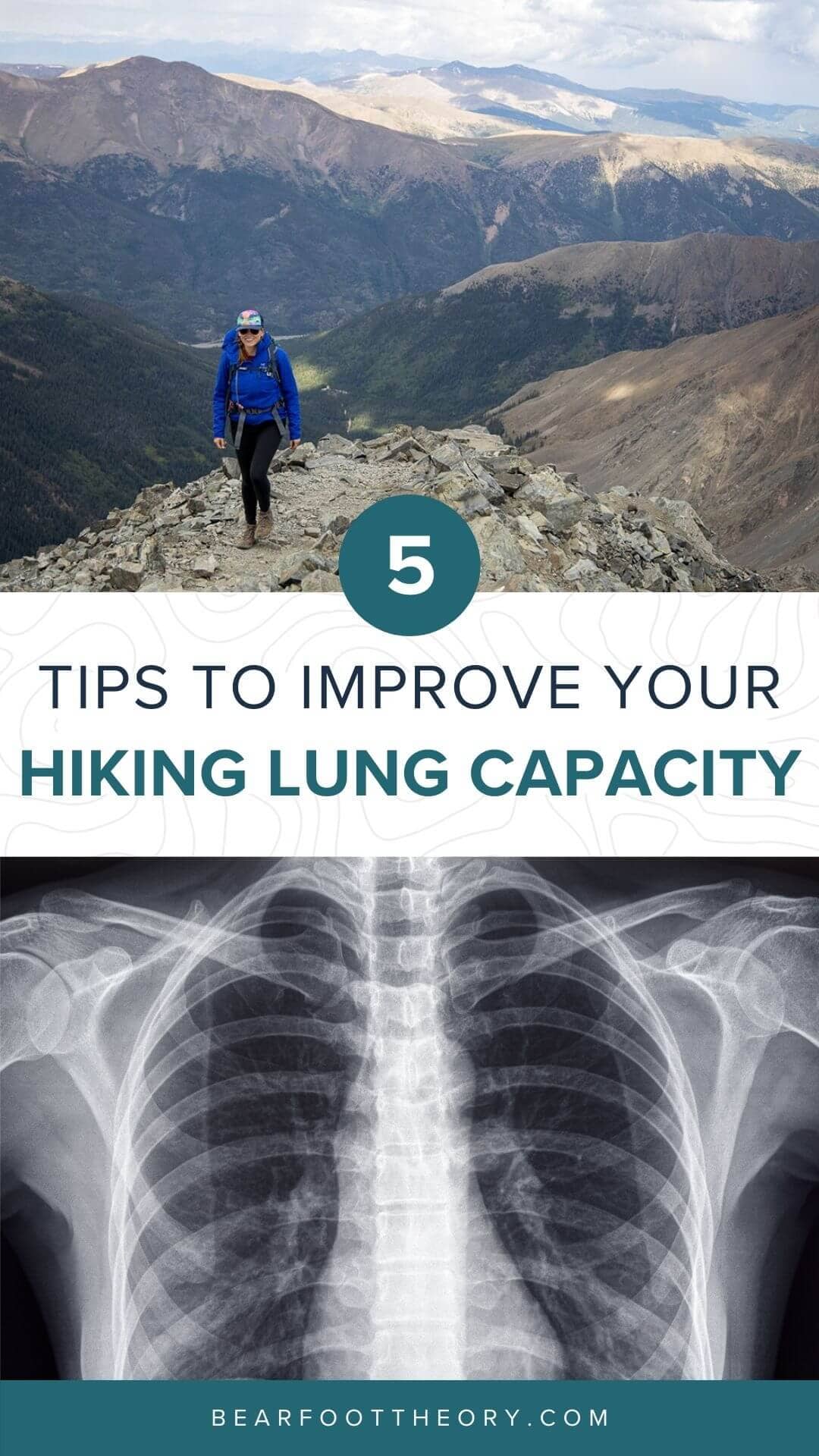
I have found that “pressure breathing” is the best way to help me breathe at high altitude. Here’s some information about pressure breathing from Rainier Mountaineering: https://www.rmiguides.com/blog/2014/07/07/mountaineering_training_moving_air_breathing_for_performance
Beleive me or not you have solved the problems of many and in those many, I came too.I know about the high level of stamina but I didn’t know about stretching.Hiking is one my favorite activity and I love hike high mountains.
True, I agree and realize how this hiking advise
Hey, Kristen!
After reading this awesome piece, I just realized that my hiking buddies can train themselves towards achieving a high lung capacity.
I had a different perspective of it for a long time now.
I came across this travel article about hiking article travel tips on how to improve hiking lung capacity and realize that it is useful to my website readers and people interested to climb Mount Kilimanjaro. I really value Your website article improve hiking lung capacity and added website URL bearfoottheory to our company website which offers Kilimanjaro trekking tours in Tanzania. I believe readers who booked Kilimanjaro climb will follow your advise and make success Kilimanjaro summit.
Breathing deep and slow definitely helps in high altitude. I went hiking on a volcano at almost 5000m in Ecuador (coming straight from sea level) and found that breathing fast only made things worse. I didn’t get more oxygen, I was just more upset about not being able to breathe. So I can definitely recommend the slow and deep breaths.
I have not worked on improving my lung capacity, but I know for sure that I am going to try those breathing exercises you recommended. That’s a brilliant idea. I wasn’t even aware there was a possibility of actively working on increasing my lung capacity besides regular workouts. Just today, I was completely out of breath when I climbed to the top of a Maya pyramid and all I could think about was how easy our guide made it look. I don’t think I’m in the worst shape, but I definitely want to work on it. I know that being out of breath is part of the game, but I would like to be able to go a bit faster and further before I feel like my lungs are going to burst.
Thanks for the advise.
Thanks for sharing Ilona!
The Wim Hof method is an excellent breathing technique to incorporate for improved lung capacity.
Undoubtedly you have solved my big problems. I know about the high level of stamina but I didn’t know about stretching. now I know the details after reading this article. Hiking is one of my favorite activity and I love to hike high mountains.
Thanks for sharing this helpful information. You are inspiring me for hiking. I love hiking in different places. But I was worried about hiking lung capacity? Actually, I got a lot of information from your blog which you have written your blog. Review this article my confusion is clear, Thanks. http://flipoutdoor.com/
Wow! Such awesome tips in regard to hiking, I’m sure most people can take notes from this article. One thing most people lack experience while hiking. I have a couple of young friends that are going to get hiking soon. Well, this post gives me some good ideas for our hiking.
Thank you for this! It seems to me that 1 in 20 people I hike with have the same issue with oxygen as me, it’s frustrating to be the 1 person who is always winded, but not overweight and not a smoker. “The Oxygen Advantage” method/book/audio… was the best method that I found. I did the Wim Hoff paid online course, but the problem was once I stopped Wim Hoff, my lunges didn’t maintain the results (within a couple weeks I was right back to where I started, so the weeks of Wim Hoff felt like a waste of time for long term lunge improvement). Wim Hoff is more for meditation, etc.
The Oxygen Advantage is more similar to these techniques you described, of training the lunges to need less air…it’s what athletes use. It’s frustrating that my legs can keep going, but my lunges say no…I also believe it’s generic. Another example of how this shows up in my life is I also get elevation sickness above 9k.
I am so grateful I found your post, You’ve really covered up almost all the possible tips that a beginner should follow while hiking. My husband and I have been thinking of going on hiking soon. Actually, I got a lot of information from your blog which can make our hiking trip much more relaxing and enjoyable. Thanks.
All of these comments are very informative and helpful in my situation. At least I think it WILL be for me in the very near future. I am not a hiker YET, and never gave hiking a second thought. After all, I am nearly 74 years old, and am borderline of having COPD. Regrettably, I smoked for 40 years but quit about 15 years ago. Reading all of you “Pro Hikers” tips and tricks makes me want to go out and buy some new hiking shoes, practice the breathing exercises stated, and head for the mall on “Crappy Weather” days. With a little fortitude on my part, maybe I’ll see if I have made any breathing improvements. I refuse to lug around a miniature scuba tank with a concentrated oxygen supply just in case my O2 levels drop below the safe levels. and becomes critical. (So call me hard headed. I openly admit that I am.) Please keep posting your comments and feedback as I find it extremely inspiring, helpful, and very motivating. Let’s see if my other ailments will slow me down at all. Meanwhile, I’ll just hang in there as best as I can…..for an old Geezer! Keep safe….
Hey, Kristen!
After reading this awesome piece, I just realized that my hiking buddies can train themselves towards achieving a high lung capacity.
I had a different perspective of it for a long time now.
I am so grateful I found your post, You’ve really covered up almost all the possible tips that a beginner should follow while hiking.
I found this post very useful, Thanks for sharing!
Climbing Kilimanjaro
I used to hike a lot until about 55 years old. I could actually run up trails. I was in excellant shape, going to the gym 5 days a week. When I got osteoarthritis and Fibromyalgia, my life changed. I am 71 now and I started walking on our trails on our property. I do get out of breath but I keep going. Thank you for this article!
Hi Linda, walking trails around your property sounds lovely, especially at 71! Glad our blog post could help you 🙂
I like your excellent Blog.(Y)
Thank you!
Totally agree on all of these, just didn’t know that something simple as heel lifting helps this matter as well!